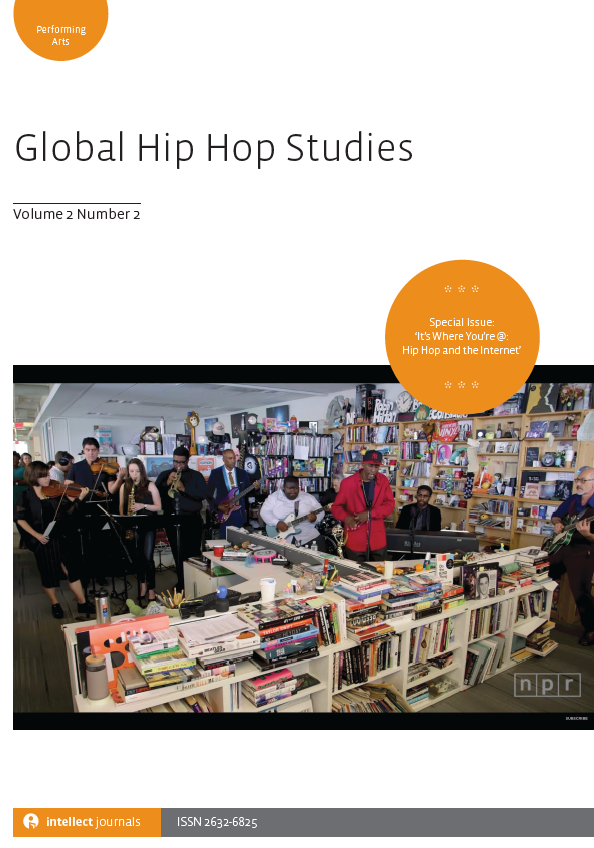-
oa Digital feminisms in Palestinian hip hop
- Source: Global Hip Hop Studies, Volume 2, Issue It’s Where You’re @: Hip Hop and the Internet, Nov 2021, p. 159 - 177
-
- 01 Nov 2021
- 02 Jul 2022
- 25 Jan 2023
Abstract
Hip hop is central to the Palestinian ‘alternative’ (badila) music scene. Recently, some rappers in the scene started making feminist tracks and sharing them using video-sharing and social media platforms. In this article, I analyse artists’ music videos as well as interviews with musicians to examine what happens when hip hop gets feminist and goes online in the Palestinian context. My argument is twofold. First, I suggest that rappers circulate songs and videos on social media that transgress gender and sexuality norms. Second, however, while these productions do critical identity work in Palestine, they also often iterate liberal ‘solutions’ to structural asymmetries. I therefore conclude that Palestinian hip hop mediates contradictory feminisms as it travels online. Neither dystopic nor utopian, digital culture makes room for gendered critiques that coexist and compete with depoliticized ideas about liberal personhood and individual agency.
Funding
- Leverhulme early career fellowship 308



